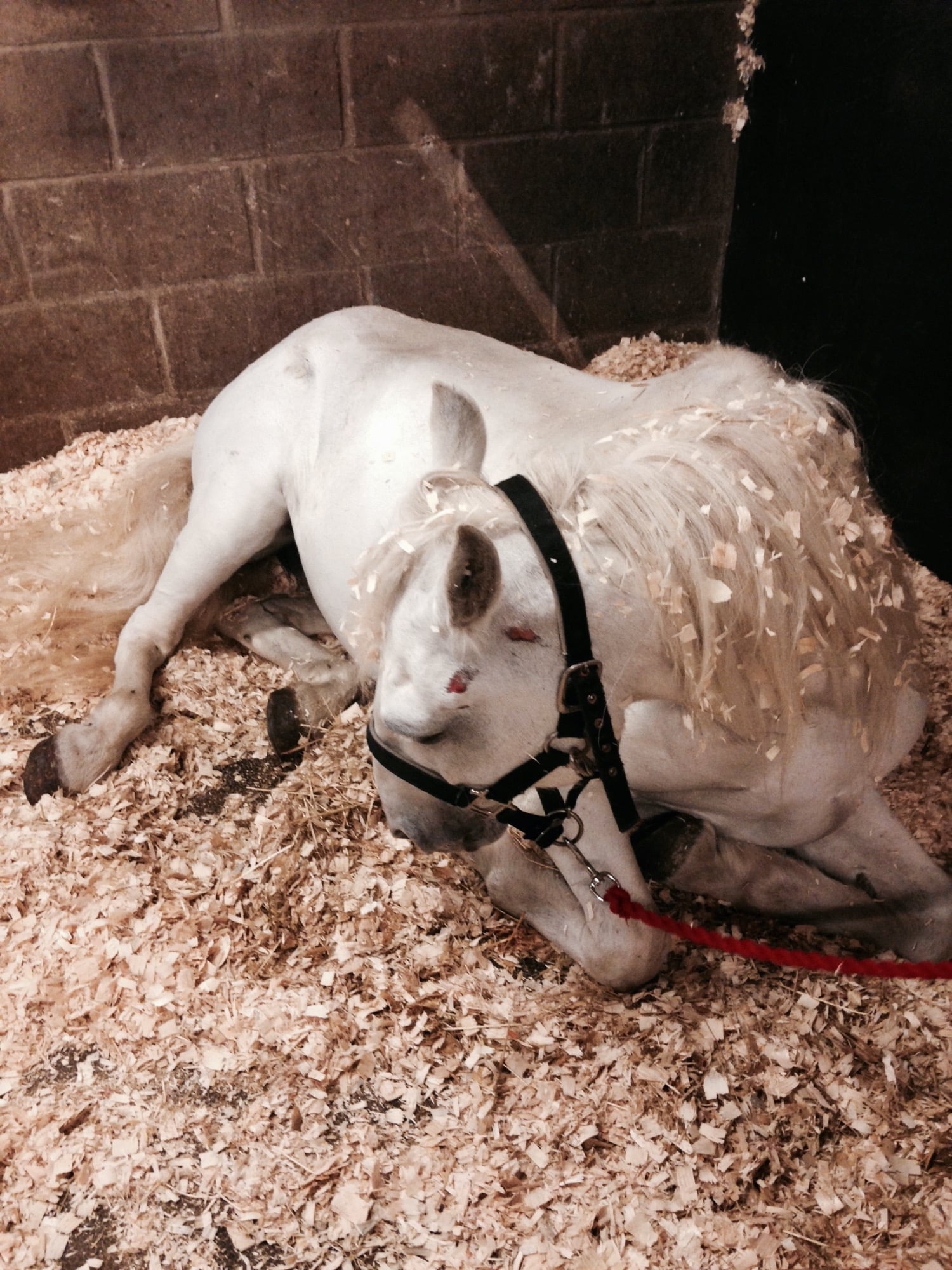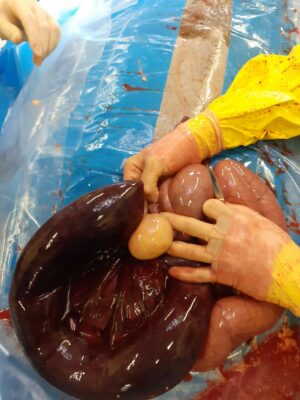Colic, Veterinary
Colic surgery
Dr Julia Dubuc, DMV, DÉS, DACVS-LA, M.Sc, AFHEA, MRCVS, University of Nottingham Vet School & Oakham Veterinary Hospital discusses the options
In most cases, surgical colics will appear more painful than non-surgical cases. In addition to clinical signs already presented in this series, other signs of important abdominal pain are abrasions above the eyes or on the hip bones and profuse sweating. The demeanor of the horses will also be altered, and it is important to understand that horses with severe abdominal pain (surgical candidates) can present at one end of the spectrum or the other: calmer versus agitated. For example, horses with a ruptured bowel will usually appear quiet all of a sudden.
As discussed by Dr Shipman in the treatment section, colics are usually first treated medically. However, in the cases where medical treatment fails to resolve a colic episode at home, the horse should be referred to a referral clinic. Referral might not be an option for all owners, and in such circumstances it might be best for the horse to proceed to euthanasia. If referral is elected, upon arrival at the clinic, the patient will be assessed. Based on this evaluation, more aggressive medical treatment will be initiated, or colic surgery will be the next option presented to the owner.
Colic surgery is a procedure which can only be undertaken in a referral centre and time is always of the essence. In line with the REACT Now to Beat Colic campaign, it is important for owners to establish a plan ahead of time so decisions can be made quickly in case of emergency. 
IMAGE Abrasions above the eye caused by continuous rolling (Image courtesy of Redwings)
Here are some important questions:
- Can I send my horse for a referral?
- Have I got reliable access to transport?
- Will my horse have a surgical option if needed?
- Is my horse insured? If yes, for how much and does it cover colics and colic surgeries?
From a medical point of view, colic surgery will be recommended if, based on the assessment, the colic cannot be resolved medically (for example, bowel is twisted within the abdomen). Because of the large size of the abdominal cavity of the horse, it will often be impossible to determine the precise diagnosis prior to surgery so, the veterinary surgeons will be guided by other factors such as the presence of extreme pain. Non-response to pain management is indicative of the need for colic surgery and if on the yard, of the need for referral.
Colic surgery is generally performed under general anaesthesia, with the horse on its back. An incision is made starting from the horse’s belly button and extends 20-30 cm along toward the horse’s sternum. The patient will receive antimicrobials and pain relief prior to the start of the procedure. Once the incision is made, the first step is to explore the abdomen and find where the issue is located. It is important to remember that the horse’s gut is very long: the small bowel is about 30 metres long, the large bowel is about 8 metres long, and the transverse and small colons together are about 5 metres long. The horse’s gut will be palpated entirely from the stomach all the way to the rectum during the exploration of the abdomen.
Communication between the surgeon and the owner will usually take place during surgery. In general, the owner will be informed of the diagnosis once the issue has been found, and the surgeon will advise on the best course of action according to the scientific literature and their experience.

Depending on the diagnosis of the horse, multiple procedures can then be performed: removal of dead bowel, emptying and lavaging the content of the gut in case of obstruction, replacing displaced gut in its normal position or, taking a sample of thickened areas (biopsy). In some cases, it is possible the surgeon will recommend putting the horse to sleep on humane grounds. This can occur when a bowel has ruptured and there is contamination of the abdominal cavity with droppings, when there is too long a segment of bowel to remove or when a segment is not accessible for removal.
In every case, the owner will be informed of the common complications associated with each procedure, as well as an estimate of cost so they can decide if they want to go ahead. Once the problem has been found and addressed, the surgeon will ensure all the abdomen has been explored and that each piece of bowel is located in the right place prior to closing the abdomen after which the horse will be recovered from anaesthesia.
The risk of mortality associated to recovery in cases of colic surgery is about 1.6%. Once the horse is back on its feet and stable, it will be brought back to an intensive care unit for 24/7 monitoring.In some cases, depending on the initial diagnosis, some horses will recover from anaesthesia but, will not survive to hospital discharge because of complications related to the primary issue.
Again, time is of the essence for referral and proceeding with surgical option when needed.If all goes well, you should expect the horse to be hospitalised for 7-10 days prior to returning home. Some of the important milestones in the post-operative period is the gradual return to drinking and full feed, as well as normal amounts of droppings.
The rehabilitation from colic surgery has been changing recently, but as a general rule of thumb, horses will be stabled for one month, turned out in a small paddock for the second month and, in a larger paddock for the third month.
The recommendations can be tailored based on post-operative complications and, the initial diagnosis of the horse.
For further information on a wide range of issues related to colic visit bhs.org.uk/colic
Oakham Veterinary Hospital is a BHS Vet REACT Colic Champion
